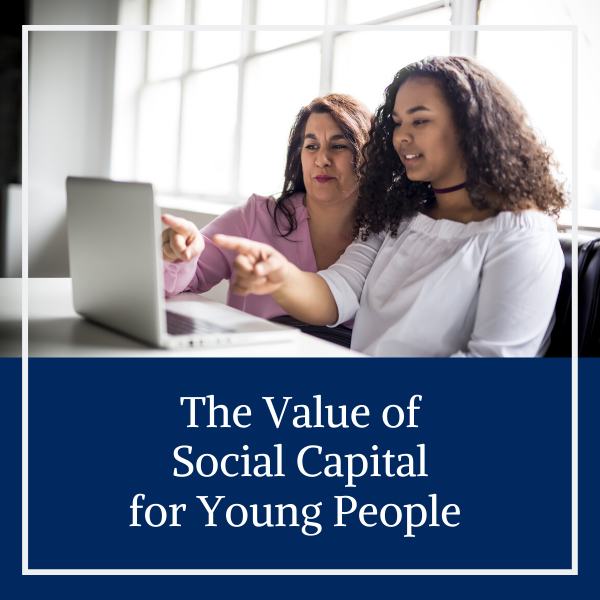Anyone who lives or works with young people knows this much: Student motivation is tricky.
Even if we have a strong idea of what young people should do to succeed and thrive in school, they might not agree. Pep talks and lectures don’t do the trick. Motivation needs to come from within—that is, it must be intrinsic with young people, not piled on by adults.
What young people do need from adults is a strong web of developmental relationships. But how do we help young people discover their inner strengths and sparks that are at the heart of student motivation?
Our research shows us that there are specific ways that adults can help young people to reach inside and discover their deep motivation to learn, grow, and connect with others.
We have discovered approaches and practices grounded in relationship-building that have proven to make a difference in student motivation.
Finding Students’ Sparks
Sparks are the interests or passions young people have within them—the activities or interests that light a fire in their lives and express the essence of who they are and what they offer to the world. When the adults in their world support and encourage their sparks, their passion often spills over into the rest of their lives and their education.
One of the most important things educators, practitioners, and leaders can do in programs and classrooms is to find creative ways to help young people identify their sparks.
Sparks Help Young People Thrive
We conducted research with thousands of young people to understand what they need in order to become thriving members of schools and communities. Finding the Student Spark is a brief that explores why some young people “get by” and others thrive.
In a collaborative research project with the Thriving Indicators Partnership (TIP), we created a framework for understanding the concept of thriving and how it connects to youth sparks.
Thriving Is a Journey
The TIP project helped us understand that thriving is not a destination; it is a journey. It reflects where a young person is at a particular moment and their ongoing process of self-discovery and development. That’s why this is such an important framework for understanding youth development.
The researchers identified the following indicators that someone is thriving:
- personal growth
- fulfillment of one’s potential
- orientation toward the future
- meaning and purpose
- emotional well-being
- social well-being
- individual characteristics such as initiative or caring
How Do We Get There?
Thriving is the result of a combination of the young person’s sparks and the context of support that nurtures their sparks. It is growing, changing, learning, and finding their place in the larger context of their family, school, or community.
When we measure sparks and thriving in surveys, we find that thriving occurs for young people who are surrounded by a web of supportive adults and near peers who recognize and encourage their sparks. These young people report:
- experiencing more life satisfaction
- positive health perceptions
- contribution to social good by volunteering or working to make the world a better place
- school success
- placing a high value on diversity
- leadership
Relationships Matter Most
The single most powerful thing that educators can do to increase student motivation is to build close connections with their students. Our ongoing research shows that close connections become truly developmental for young people when they experience these 5 elements: expressing care, challenging growth, providing support, sharing power, and expanding possibilities.
Identifying sparks is the first step to expanding possibilities for young people. Once we know what lights them up, we meet them where they are and engage them by providing support and expressing care for their whole selves. When we know them better, we can connect them to social capital resources, near peers, and other people and programs that can help them succeed and thrive.
Finding the Spark of Motivation
Sparks are the skills, talents, or interests that a young person finds deeply motivating. It could be biology, math, dance, theater, computers, or art. But whatever it is, when they find it, they discover that their life has a purpose. As a result, they are more likely to feel engaged in school.
What Makes You Happy? Identifying and Sharing Sparks is a 45-minute activity that teachers and program leaders can use to help students find their sparks. It also helps build and strengthen relationships among the participants, and between participants and leaders.
Students ponder questions like
- What are some things you are really interested in?
- What is an activity you are really good at?
- If you woke up one morning and were told you could do one activity for as long as you wanted all day, what would it be?
- Are there times when you lose track of time because you are absorbed in an activity? What are you doing then?
- When in your life do you feel happiest?
After answering the questions, students complete a questionnaire and return it to the teacher or leader. Follow-up is important because the teacher will check in on students’ sparks, connect them to other learning areas, and recognize milestones.
This relatively simple activity deepens students’ self-knowledge. And it serves to deepen the developmental relationships in the group.
Expanding Possibilities for ALL Young People
What Makes You Happy? is just one of the resources educators are using to deepen their developmental relationships with all students.
By expanding possibilities for young people, we are building a foundation for a relationship-rich environment where staff, students, and leaders all speak a common language in the service of creating a school climate that welcomes and supports all students to become their best selves.
Approaching the issue of student motivation through this positive, growth-oriented lens expands possibilities for young people in ways that enrich their lives and relationships. Instead of pushing them to succeed, this approach of expanding possibilities empowers students to be and become their best selves—and we thrive together.




